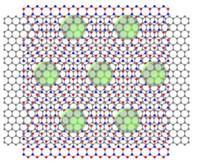 The electron mass in vacuum m
e
is a fundamental physical constant. When electrons are moving in few-layer
graphene sheets, their behavior gets strongly modified by the two-dimensional
carbon lattice. Here I will discuss the capability to control the effective
electron mass in few-layer graphene, and the unique physical phenomena emerging
from such mass control: Electrons in monolayer graphene are described by a zero
effective mass. Such massless Dirac fermions exhibit a linear energy dispersion
and quantum critical electrodynamics. Bilayer graphene has a finite electron
mass, and a widely tunable semiconductor bandgap can be induced through a
vertical electrical field. Trilayer graphene, in contrast, features
super-massive electrons at low energy. When integrated into a two-dimensional
heterostructure with hexagonal boron nitride, the trilayer graphene can exhibit
strongly correlated behavior and give rise to an electrically tunable Mott
insulator.
The electron mass in vacuum m
e
is a fundamental physical constant. When electrons are moving in few-layer
graphene sheets, their behavior gets strongly modified by the two-dimensional
carbon lattice. Here I will discuss the capability to control the effective
electron mass in few-layer graphene, and the unique physical phenomena emerging
from such mass control: Electrons in monolayer graphene are described by a zero
effective mass. Such massless Dirac fermions exhibit a linear energy dispersion
and quantum critical electrodynamics. Bilayer graphene has a finite electron
mass, and a widely tunable semiconductor bandgap can be induced through a
vertical electrical field. Trilayer graphene, in contrast, features
super-massive electrons at low energy. When integrated into a two-dimensional
heterostructure with hexagonal boron nitride, the trilayer graphene can exhibit
strongly correlated behavior and give rise to an electrically tunable Mott
insulator.
Department of Physics
What can we help you find?

